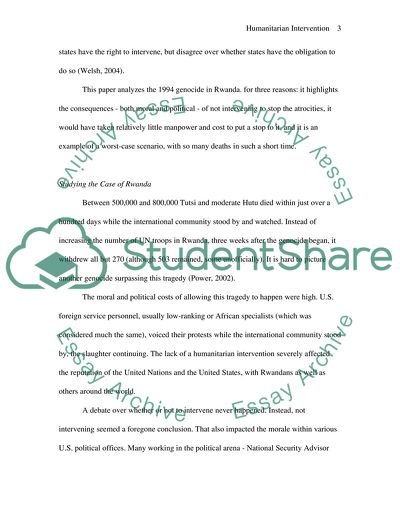Cite this document
(Humanitarian Intervention in Rwanda Case Study Example | Topics and Well Written Essays - 3000 words, n.d.)
Humanitarian Intervention in Rwanda Case Study Example | Topics and Well Written Essays - 3000 words. Retrieved from https://studentshare.org/social-science/1752045-you-are-required-to-pick-your-own-essay-title-in-conjunction-with-the-module
Humanitarian Intervention in Rwanda Case Study Example | Topics and Well Written Essays - 3000 words. Retrieved from https://studentshare.org/social-science/1752045-you-are-required-to-pick-your-own-essay-title-in-conjunction-with-the-module
(Humanitarian Intervention in Rwanda Case Study Example | Topics and Well Written Essays - 3000 Words)
Humanitarian Intervention in Rwanda Case Study Example | Topics and Well Written Essays - 3000 Words. https://studentshare.org/social-science/1752045-you-are-required-to-pick-your-own-essay-title-in-conjunction-with-the-module.
Humanitarian Intervention in Rwanda Case Study Example | Topics and Well Written Essays - 3000 Words. https://studentshare.org/social-science/1752045-you-are-required-to-pick-your-own-essay-title-in-conjunction-with-the-module.
“Humanitarian Intervention in Rwanda Case Study Example | Topics and Well Written Essays - 3000 Words”, n.d. https://studentshare.org/social-science/1752045-you-are-required-to-pick-your-own-essay-title-in-conjunction-with-the-module.


